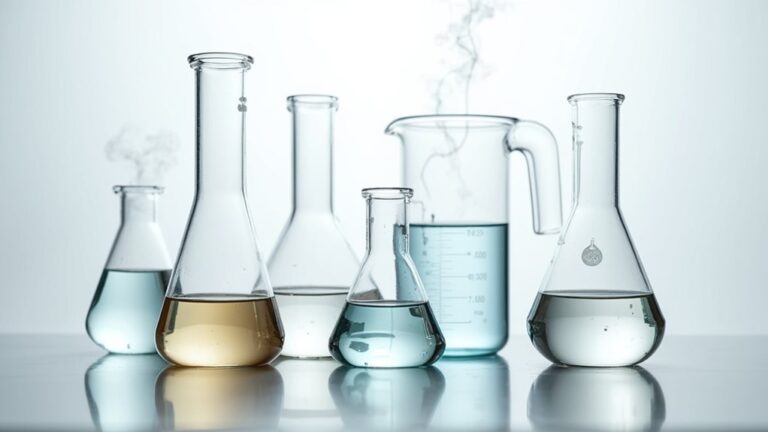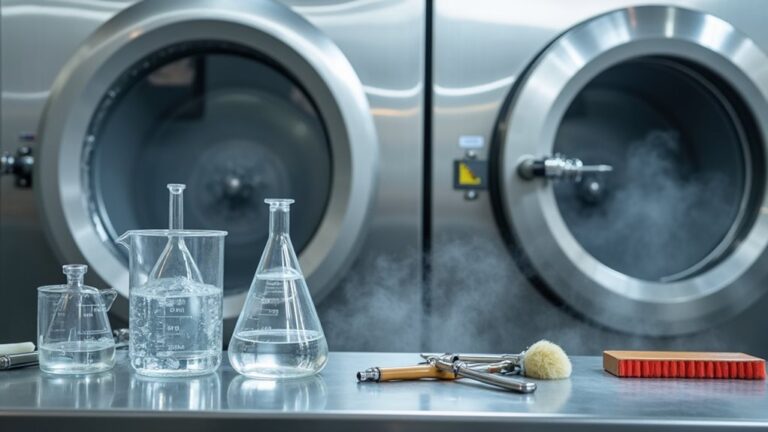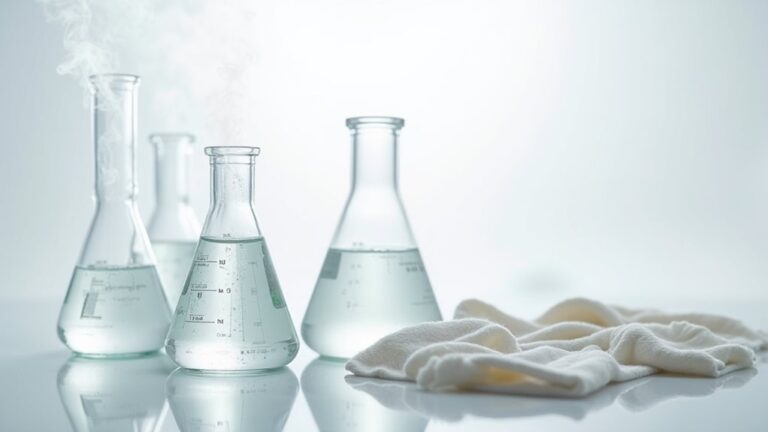When you drop off your clothes at the dry cleaner, they’re not actually getting “dry” cleaned—they’re getting a chemical bath using solvents like perchloroethylene that dissolve oil-based stains water can’t touch. Your garments get tagged, pre-treated for stubborn spots, then tumbled in these non-polar solvents that lift dirt without damaging delicate fibers like silk or wool. The process recovers 99.99% of the solvent through sophisticated recycling systems, and there’s much more happening behind those curtains.
The Science Behind Solvent-Based Cleaning
While most of us toss our everyday clothes into the washing machine without a second thought, dry cleaning operates on a completely different scientific principle that’s honestly pretty fascinating once you understand what’s happening behind those mysterious shop curtains.
The magic lies in solvent-based cleaning, where perchloroethylene (or “perc” as industry folks call it) acts as the star performer, dissolving oil-based stains that water simply can’t touch. These non-polar solvents work differently than water, selectively targeting stains without penetrating fabric fibers—protecting your delicate fabrics from shrinking or losing their shape.
Your garments get agitated in a closed-loop system that recycles 99.99% of the solvent, minimizing environmental impact. Today’s shops increasingly use alternative solvents like liquid carbon dioxide and siloxane for safer cleaning.
Before the actual cleaning begins, professional cleaners perform a crucial pre-treating stains step to identify and address specific problem areas on each garment.
Step-by-Step Dry Cleaning Process
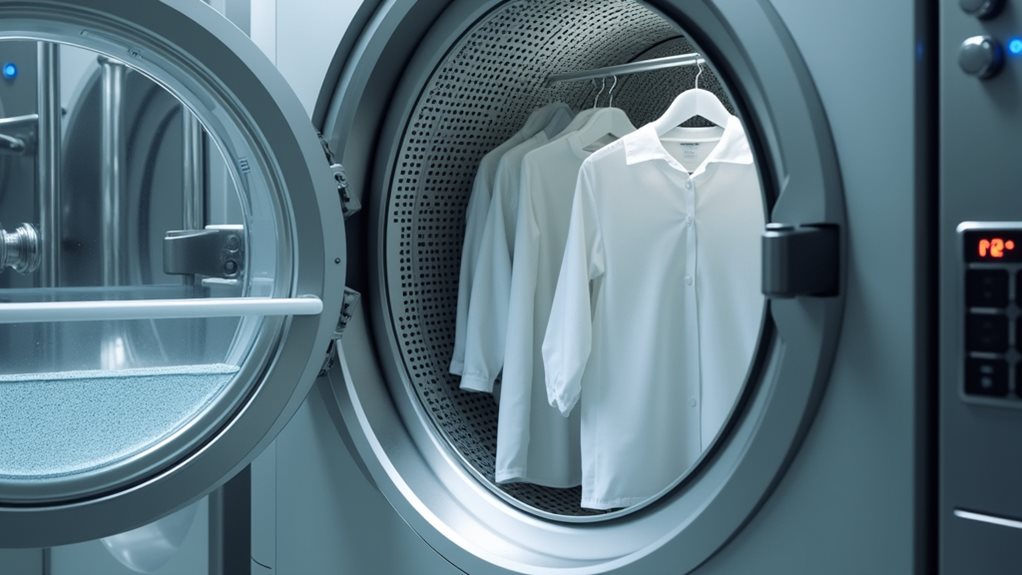
Now that you understand the chemistry working behind the scenes, let’s walk through exactly what happens to your favorite silk blouse or wool suit from the moment you hand it over at the counter.
Ever wondered what happens to your delicate garments once they disappear behind the dry cleaner’s counter into that mysterious back room?
The dry cleaning process follows a methodical approach that’s honestly quite fascinating once you peek behind the curtain.
Here’s how your garments undergo their transformation:
- Initial inspection and tagging process – Each piece gets examined for damage and receives identification tags
- Stain pre-treatment – Stubborn spots get specialized attention before the main cleaning
- Solvent cleaning – Cleaning machines use perchloroethylene to lift dirt while protecting delicate fabrics
- Drying and recovery – Modern machines reclaim solvent for reuse with 99.99% efficiency
- Finishing touches – Steaming and pressing restore shape before return to the customer
This process is particularly beneficial for structured garments that could lose their shape or become damaged if subjected to traditional water-based washing methods.
Types of Solvents and Their Properties
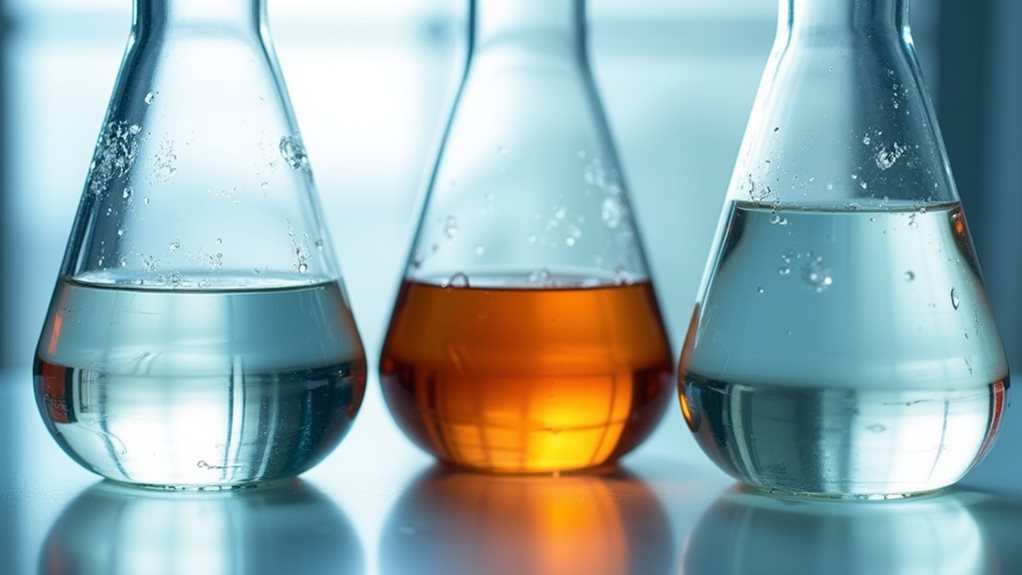
Although you might think all dry cleaning solvents work the same magic on your clothes, the truth is that different chemicals bring their own personalities to the cleaning game, and honestly, some are much better dinner guests than others 😊.
Perchloroethylene has dominated the dry cleaning industry for decades because it’s incredibly effective, but it carries serious health risks as a known carcinogen.
High flash hydrocarbons offer safer alternatives with lower toxicity, while liquid carbon dioxide cleaning uses pressurized CO2 as a non-toxic solvent that’s perfect for delicate fabrics.
Silicone-based solvents provide gentle cleaning without harmful chemicals, making them true environmentally friendly solvents.
Meanwhile, trichloroethylene has been mostly phased out due to cancer concerns, proving the industry’s gradual shift toward safer options.
Professional dry cleaning establishments use specialized equipment specifically designed to work with these chemical solvents rather than water-based cleaning methods.
Benefits and Limitations for Different Fabrics

Dry cleaning absolutely shines with delicate fabrics, protecting your precious silk blouses and wool sweaters from the shrinking disasters I’ve witnessed too many times.
Here’s what you need to know:
- Cashmere and velvet maintain their luxurious texture through dry cleaning
- Oil-based stains disappear like magic with professional solvents
- Water-based stains can be stubborn and require special attention
- Synthetic materials like rayon might react poorly to harsh chemicals
- Care labels become your best friend for avoiding costly mistakes
However, dry cleaning has limitations with certain synthetic materials, so always check those care labels first. Garments with complex construction features like structured blazers and beaded items benefit from professional dry cleaning because chemical solvents preserve their shape and prevent damage from conventional washing’s agitation and heat.
Environmental Considerations and Green Alternatives

When I first learned about the chemicals swirling around in traditional dry cleaning, I’ll admit it made me think twice about dropping off my favorite blazer every month.
Discovering the toxic reality behind my monthly dry cleaning routine was enough to make any environmentally conscious person pause and reconsider.
Perchloroethylene, the main culprit in conventional cleaning, creates a considerable environmental impact that regulatory pressures are finally addressing.
Thankfully, you’ve got eco-friendly alternatives emerging everywhere – liquid carbon dioxide cleaning and silicone-based solvents that actually work without the toxic baggage.
I’ve watched energy-efficient machines revolutionize shops near me, recycling solvents while cutting harmful emissions dramatically.
These sustainable practices aren’t just trendy marketing; they’re genuine solutions for environmentally conscious consumers who refuse to choose between clean clothes and a clean planet.
Many dry cleaners now offer wet cleaning as another environmentally friendly alternative that uses water-based solutions and specialized techniques to safely clean garments traditionally requiring chemical solvents.
Your garments stay pristine while your conscience stays clear.


